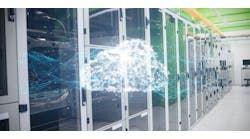Achieving sustainability goals with multi-cloud end-user computing
In today’s evolving business landscape, consumers, investors and regulators are demanding sustainable products, services, operations and environmental/social/governance (ESG) transparency. IDC estimates that cloud computing could save a billion metric tons of CO2 emissions by 2024, which equates to 222.5M gasoline-powered passenger vehicles driven for one year. Organizations within critical industries, including the energy sector, are leveraging cloud technologies to power their businesses in a sustainable way.
Every industry has its own ambitions around better data, faster insights and smarter models that can make a difference, and now sustainability has become part of that equation. 50% of CIOs will have their performance metrics tied to sustainability of the IT organization by 2025. Businesses are still looking to get a complete understanding of what’s possible, how they can put in place strategies that achieve global, corporate and personal environmental goals. Within enterprise IT, modernizing end-user computing (EUC) is the low-hanging fruit when it comes to advancing sustainability practices.
One example is Landis+Gyr, smart grid energy-management company that helps utility companies around the globe improve their operations, protect their assets, lower their operating costs, and provide better customer service. Landis+Gyr is making a positive impact by leveraging technology to drive productivity, efficiency and reduction in CO2 emissions.
Landis+Gyr developed five values to drive their goal of becoming Carbon Neutral by 2030: customer intimacy, uncompromising performance, innovative technology, entrepreneurial spirit and sustainable impact. As part of their strategy to achieve all those goals, the company opted for innovation and modernization of end-user computing:
● The road to cloud-native: Landis+Gyr wanted to bring their flagship product into the cloud-age, so they partnered with Google to develop a cloud-native product for their customers. The primary impact was reduced total-cost-of-ownership for developing new products and meeting customers’ needs more quickly.
● Consolidating data: Landis+Gyr collaborated with professional-services company Accenture to migrate applications and data from seven data centers into the cloud.
● Improving end-user computing: Landis+Gyr also opted to take a multi-cloud approach to end-user computing (EUC). Choosing Workspot’s cloud-native VDI platform, the company was able to quickly and securely onboard customers around the world. As a result of their EUC modernization strategy, Landis+Gyr reduced their PC delivery time from 5-10 days to 1-2 days—a 75% improvement in overall delivery time, ultimately reducing energy consumption across locations.
● Choosing the right partners: Landis+Gyr chose vendor partners whose values reflect their focus on innovation and sustainability. In their selection process, they also emphasized the need for flexibility and scalability, capabilities that are already improving operations while also accelerating their ability to affect climate change through product innovation.
Landis+Gyr is demonstrating how best-of-breed technology can be harnessed to drive greater innovation while honoring corporate values, leading the fight against complex global challenges and empowering their end customers for greater success.



